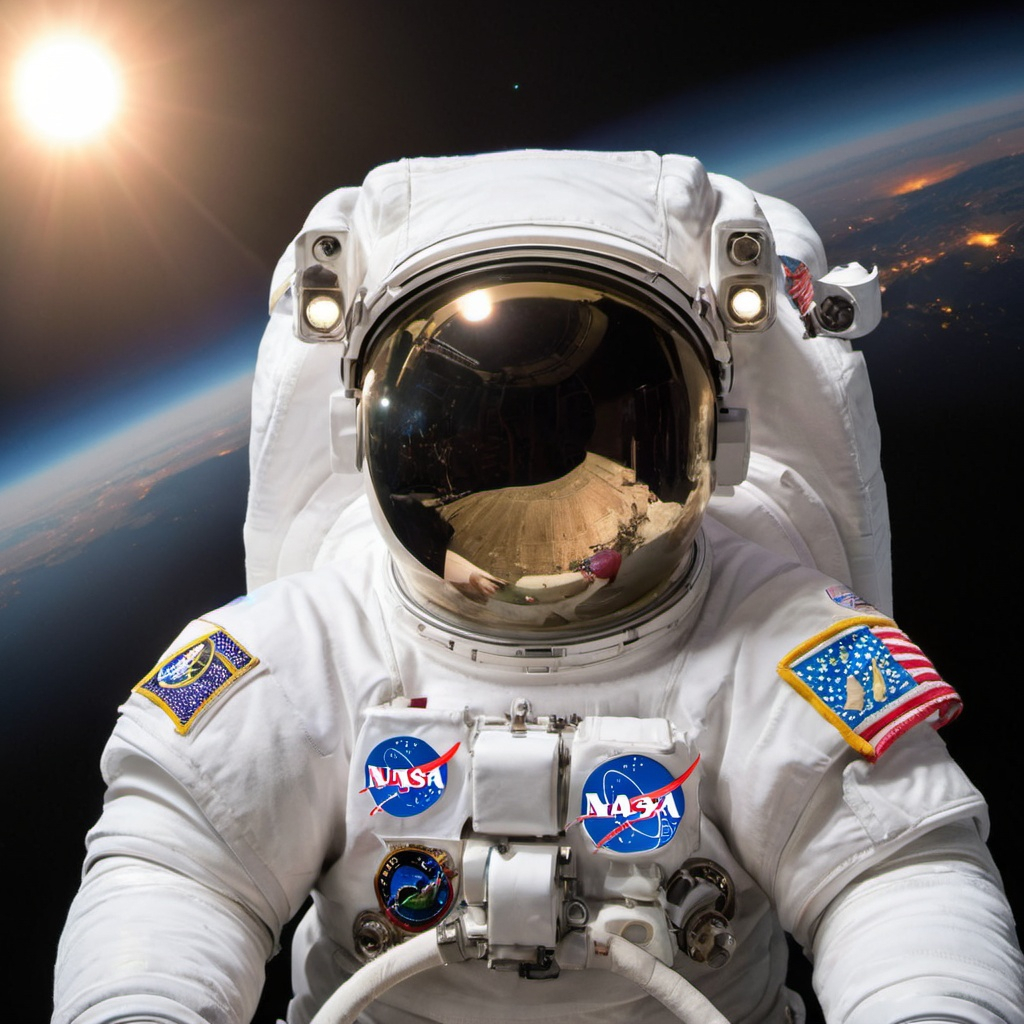The National Aeronautics and Space Administration, better known as NASA, stands as a symbol of human curiosity and ingenuity. Established in 1958, NASA’s mission is to pioneer the future in space exploration, scientific discovery, and aeronautics research. Over the decades, NASA has launched numerous missions that have expanded our understanding of the universe, advanced technology, and inspired generations. This article delves into the history of NASA, its significant space missions, and the profound impact these missions have had on science and society.

The Birth of NASA: A Response to the Space Race
NASA was born out of a critical moment in history—the Cold War. The Soviet Union’s launch of Sputnik 1 in 1957 shocked the world and demonstrated that space could become a new frontier for military and technological competition. In response, the United States established NASA on July 29, 1958, to ensure American leadership in space exploration.
NASA’s early years were marked by rapid progress and significant achievements. The agency’s first major program was Project Mercury, aimed at sending an American astronaut into space. This was successfully achieved on May 5, 1961, when Alan Shepard became the first American in space aboard the Freedom 7 spacecraft. This success was followed by Project Gemini, which aimed to develop space travel techniques to support the upcoming Apollo missions.
The Apollo Program: A Giant Leap for Mankind
Perhaps the most iconic of all NASA’s endeavors is the Apollo program, which aimed to land humans on the Moon and return them safely to Earth. This ambitious goal was set by President John F. Kennedy in 1961 and culminated in the historic Apollo 11 mission.
Apollo 11
On July 20, 1969, Apollo 11 astronauts Neil Armstrong and Buzz Aldrin became the first humans to set foot on the lunar surface, while Michael Collins orbited the Moon in the command module. Armstrong’s famous words, “That’s one small step for man, one giant leap for mankind,” encapsulated the monumental achievement. The mission not only demonstrated technological prowess but also fostered a sense of global unity and possibility.
Subsequent Apollo Missions
Following Apollo 11, NASA conducted six more lunar missions, five of which successfully landed astronauts on the Moon. These missions included:
- Apollo 12: Demonstrated precision landing and brought back more scientific data.
- Apollo 14: Further explored the lunar surface and conducted extensive scientific experiments.
- Apollo 15: Introduced the Lunar Roving Vehicle, allowing astronauts to travel further on the Moon.
- Apollo 16: Focused on the lunar highlands and conducted various geological surveys.
- Apollo 17: The final lunar landing mission, which included the only geologist astronaut, Harrison Schmitt.
The Apollo program fundamentally transformed our understanding of the Moon, revealing its composition, structure, and history. It also set the stage for future space exploration and human spaceflight endeavors.
Skylab and the Shuttle Era: Building a Presence in Space
After the Apollo program, NASA shifted its focus to establishing a long-term human presence in space. This led to the development of Skylab, the United States’ first space station.
Skylab
Launched in 1973, Skylab provided valuable experience in living and working in space for extended periods. The space station hosted three crewed missions, each progressively longer, allowing astronauts to conduct scientific experiments and observations. Skylab’s missions provided critical insights into the effects of microgravity on the human body and the challenges of long-duration spaceflight.
The Space Shuttle Program
The next major milestone in NASA’s history was the Space Shuttle program, which aimed to create a reusable spacecraft capable of carrying astronauts and cargo to and from low Earth orbit. The first shuttle, Columbia, launched on April 12, 1981. The Shuttle program marked a significant shift in space exploration, emphasizing versatility and routine access to space.
Over its 30-year history, the Space Shuttle program achieved numerous milestones:
- Hubble Space Telescope Deployment: In 1990, the shuttle Discovery deployed the Hubble Space Telescope, which revolutionized our understanding of the universe with its stunning images and scientific data.
- International Space Station (ISS): The Shuttle program played a crucial role in the construction and maintenance of the ISS, a multinational collaboration that serves as a platform for scientific research and international cooperation.
- Space Laboratory Missions: The Shuttle program facilitated various scientific missions, including the Spacelab module, which allowed scientists to conduct experiments in microgravity.
However, the program also faced tragedies, including the Challenger disaster in 1986 and the Columbia disaster in 2003, which underscored the inherent risks of space exploration. Despite these setbacks, the Shuttle program left a lasting legacy of technological advancements and expanded human presence in space.
Robotic Explorations: Unveiling the Mysteries of the Solar System
While human spaceflight captures much of the public’s imagination, NASA’s robotic missions have also significantly advanced our understanding of the solar system and beyond. These missions, often named after renowned scientists and explorers, have provided detailed information about our celestial neighbors.
Mars Exploration
Mars has been a focal point of NASA’s robotic exploration efforts, given its potential to host past or present life and its similarity to Earth. Notable missions include:
- Viking Program: Launched in the 1970s, the Viking 1 and Viking 2 missions were the first successful landers on Mars, providing detailed images and data about the Martian surface and atmosphere.
- Mars Rovers: The Spirit and Opportunity rovers, launched in 2003, provided valuable insights into the geology and climate of Mars. Opportunity’s mission lasted nearly 15 years, far exceeding its expected lifespan.
- Curiosity Rover: Launched in 2011, Curiosity continues to explore Mars, studying its climate and geology and assessing its habitability.
- Perseverance Rover: Launched in 2020, Perseverance aims to search for signs of past life and collect samples for future return to Earth. It also deployed Ingenuity, the first helicopter to fly on another planet.
Outer Solar System Missions
NASA has also sent missions to explore the outer reaches of the solar system, unveiling the mysteries of distant planets and their moons:
- Voyager Program: Launched in 1977, the twin Voyager spacecraft provided the first detailed images of the outer planets and are now traveling through interstellar space, sending back data about the heliosphere’s boundary.
- Galileo Mission: Launched in 1989, Galileo studied Jupiter and its moons, providing critical insights into the planet’s atmosphere and the potential for subsurface oceans on moons like Europa.
- Cassini-Huygens Mission: A collaboration with the European Space Agency (ESA), Cassini explored Saturn and its moons from 2004 to 2017, revealing the complexity and diversity of the Saturnian system.
New Horizons
One of the most remarkable missions to the outer solar system is New Horizons, launched in 2006. In 2015, it provided humanity’s first close-up images of Pluto and its moons, revealing a surprisingly complex and dynamic world. New Horizons continues its journey into the Kuiper Belt, studying other distant objects.
Astrophysics and Space Telescopes: Gazing into the Cosmos
NASA’s contributions to astrophysics have been transformative, thanks to its space telescopes and observatories that have allowed us to peer deep into the universe.
Hubble Space Telescope
Launched in 1990, the Hubble Space Telescope has revolutionized our understanding of the universe. Its high-resolution images have provided insights into everything from the formation of stars and galaxies to the expansion of the universe. Hubble’s observations have confirmed the existence of black holes, mapped dark matter, and helped measure the rate of cosmic expansion, known as the Hubble constant.
Chandra X-ray Observatory
Launched in 1999, the Chandra X-ray Observatory has provided unprecedented views of the high-energy universe. It has observed black holes, neutron stars, supernova remnants, and galaxy clusters, revealing the universe’s most energetic and dynamic processes.
James Webb Space Telescope
Set to launch in 2021 (and successfully launched subsequently), the James Webb Space Telescope (JWST) represents the next generation of space observatories. With its advanced infrared capabilities, JWST will peer further back in time than ever before, studying the formation of the first galaxies, stars, and planetary systems.
Kepler and TESS Missions
NASA’s search for exoplanets—planets orbiting other stars—has been remarkably successful. The Kepler Space Telescope, launched in 2009, discovered thousands of exoplanets, including many Earth-sized planets in habitable zones. Building on Kepler’s success, the Transiting Exoplanet Survey Satellite (TESS), launched in 2018, continues to discover new exoplanets, expanding our understanding of the potential for life beyond Earth.
The International Space Station: A Hub for Research and Collaboration
The International Space Station (ISS) represents a pinnacle of international cooperation in space exploration. Launched in 1998, the ISS serves as a microgravity laboratory where scientists from around the world conduct research in various fields, including biology, physics, astronomy, and earth sciences.
The ISS has hosted over 240 astronauts from 19 countries, fostering international collaboration and scientific discovery. Research conducted on the ISS has led to advancements in medical treatments, materials science, and our understanding of the effects of long-duration spaceflight on the human body. The ISS also serves as a testbed for technologies needed for future deep space missions, including Mars exploration.
The Artemis Program: Returning to the Moon and Beyond
Looking to the future, NASA’s Artemis program aims to return humans to the Moon by the mid-2020s and establish a sustainable presence by the end of the decade. Named after the twin sister of Apollo in Greek mythology, Artemis represents a new era of lunar exploration.
Artemis I
The first uncrewed test flight of the Space Launch System (SLS) rocket and Orion spacecraft, Artemis I, is designed to demonstrate the capabilities of these systems and pave the way for future crewed missions.
Artemis II
Artemis II will be the first crewed mission, sending astronauts on a lunar flyby to test the spacecraft’s performance and crew operations in deep space.
Artemis III
Scheduled for the mid-2020s, Artemis III aims to land astronauts on the lunar surface, including the first woman and the next man. This mission will focus on exploring the lunar South Pole, a region believed to contain water ice that could be crucial for future exploration and potential colonization.
Lunar Gateway
As part of the Artemis program, NASA is developing the Lunar Gateway, a space station in lunar orbit that will serve as a staging point for missions to the Moon and beyond. The Gateway will provide support for sustainable lunar operations and act as a hub for international and commercial partners.
Mars and Beyond: The Next Frontier
NASA’s long-term goals extend beyond the Moon, with Mars as the next major destination for human exploration. The agency is developing technologies and conducting research to address the challenges of sending humans to Mars, including life support systems, radiation protection, and sustainable habitats.
Mars Missions
Future Mars missions will build on the successes of robotic explorers like Curiosity and Perseverance. NASA’s Mars Sample Return mission, in collaboration with ESA, aims to bring Martian samples back to Earth for detailed analysis. This mission will provide critical information for future human missions to Mars.
Human Missions to Mars
NASA’s vision for human exploration of Mars involves sending astronauts to the Red Planet in the 2030s. These missions will require advancements in propulsion, life support, and in-situ resource utilization (ISRU) to enable astronauts to live and work on Mars for extended periods.
Conclusion: A Legacy of Exploration and Discovery
NASA’s journey from its inception to the present day is a testament to human curiosity, perseverance, and the desire to explore the unknown. From the historic Apollo Moon landings to the ongoing exploration of Mars and the outer solar system, NASA has pushed the boundaries of what is possible and expanded our understanding of the universe.
As we look to the future, NASA’s ambitious plans for the Artemis program, Mars exploration, and beyond promise to usher in a new era of discovery and innovation. These endeavors will not only enhance our scientific knowledge but also inspire future generations to continue exploring the final frontier.




